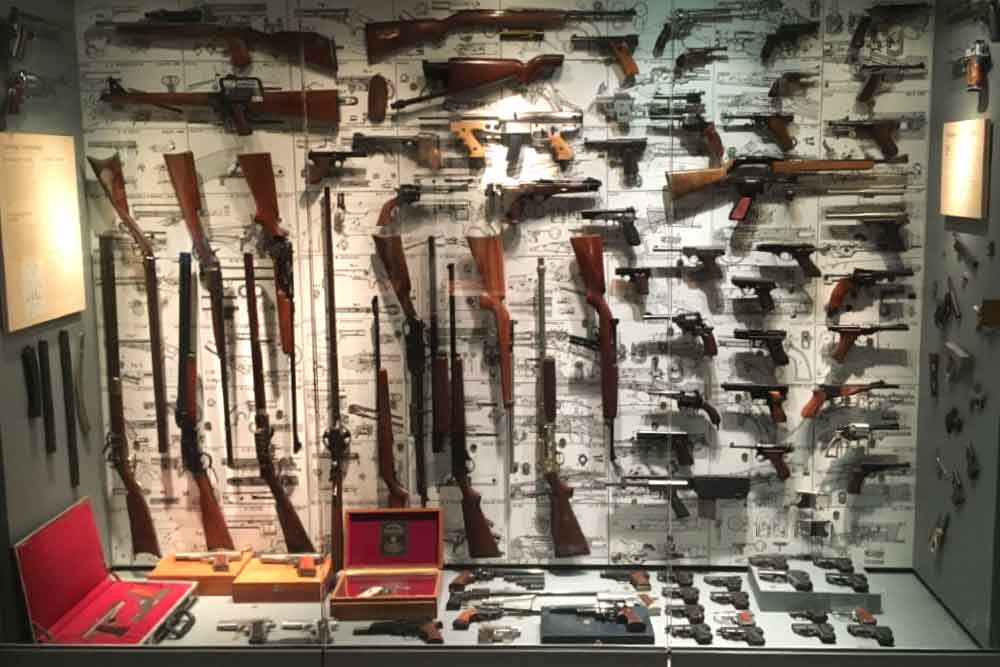
The NRA National Firearms Museum. Image by author.
Once, I drove through Virginia slush to NRA Headquarters,
the winter air humming
with the emptiness of my plan
which was not more than the hope of doing something
beyond thoughts & prayers, or any one word I might try
to use after seeing a self-defense catalog
with its photo of a young girl sitting cross-legged
against the cinderblock grid of a school wall as she grips
a bulletproof backpack,
raising it up so that it conceals
her body more or less
behind a kid-friendly style,
which means blue with a cascade of emojis. For the last mile,
I stared at strip mall signs—Jenny Craig, Elegant Dancing,
Lead by Example Tae Kwon Do—that made me feel as if
I was lost in someone’s idea of what America should be:
eye-catching, with plenty of parking, & a flailing
inflatable tube man
who rises & falls, arms raised, frantic
to explain that a memory foam mattress sells for less guaranteed.
Without an appointment or idea
of what to do next,
I side-stepped the lobby’s Tom Selleck cutout telling me
something about freedom
I forgot to write down & strolled into
the first room of the National Firearms Museum carrying
some vague hope of what? Whatever I’d come here to find,
it wasn’t Annie Oakley’s pistol or a custom 12-gauge
commemorating Princess Di’s wedding or the gold inlaid
half-dozen geese soaring between
trigger & bolt
of a shotgun belonging to Hermann Göring. A few lines
of wall text described Bulino style, which meant, I learned,
the process of utilizing
thousands or millions of tiny dots
of varying size to create subtly shaded scenes, which ranged
from two coonhounds charging quail sheltered in long tangles
of grass, to a rifle’s photorealistic Rolls Royce careening toward
a woman—topless, lips parted—nestled against a tiger.
And peering into one
mounted magnifying glass I saw
a gun engraved with a Tribute to Picasso featuring,
I swear, a miniature Guernica that mimicked each detail
of his horse & bull, the one jagged light & those bodies
we’ve seen so many times—
necks craned back, each month
in a wail—rendered in a way that reduced any trace
of sorrow to mere line & shape. America, I’m done
with prayers
& mirrored vitrines, the yellow dots
of emojis wide-eyed on a kid’s armored backpack
& black dots too numerous to count,
spread across
those maps that track gun violence & for what? Then again,
here I am speaking to you from within the silence of a poem
which is not much more than a form of prayer
we’ve heard too many times that makes
nothing change. By the time
I’d finished wandering through
the other rooms, it was too late to do anything but drive
the same roads back to the hotel while half-listening
to classic rock & chasing after an idea about how we should
step back & see the shape made
by those black dots scattered
across the US map, although haven’t we done that already—
stepped back, & looked, & long known what we’ve made?



